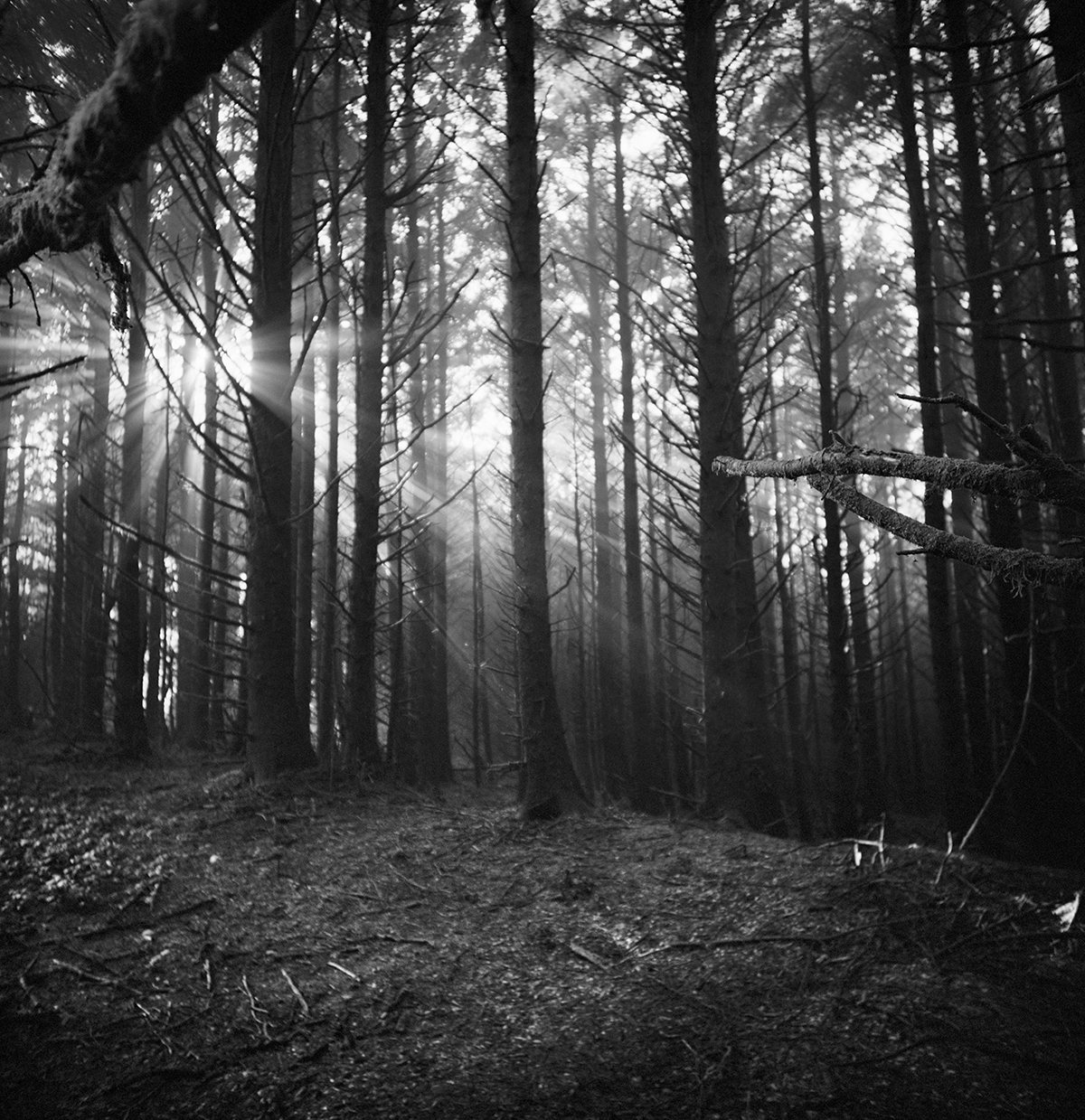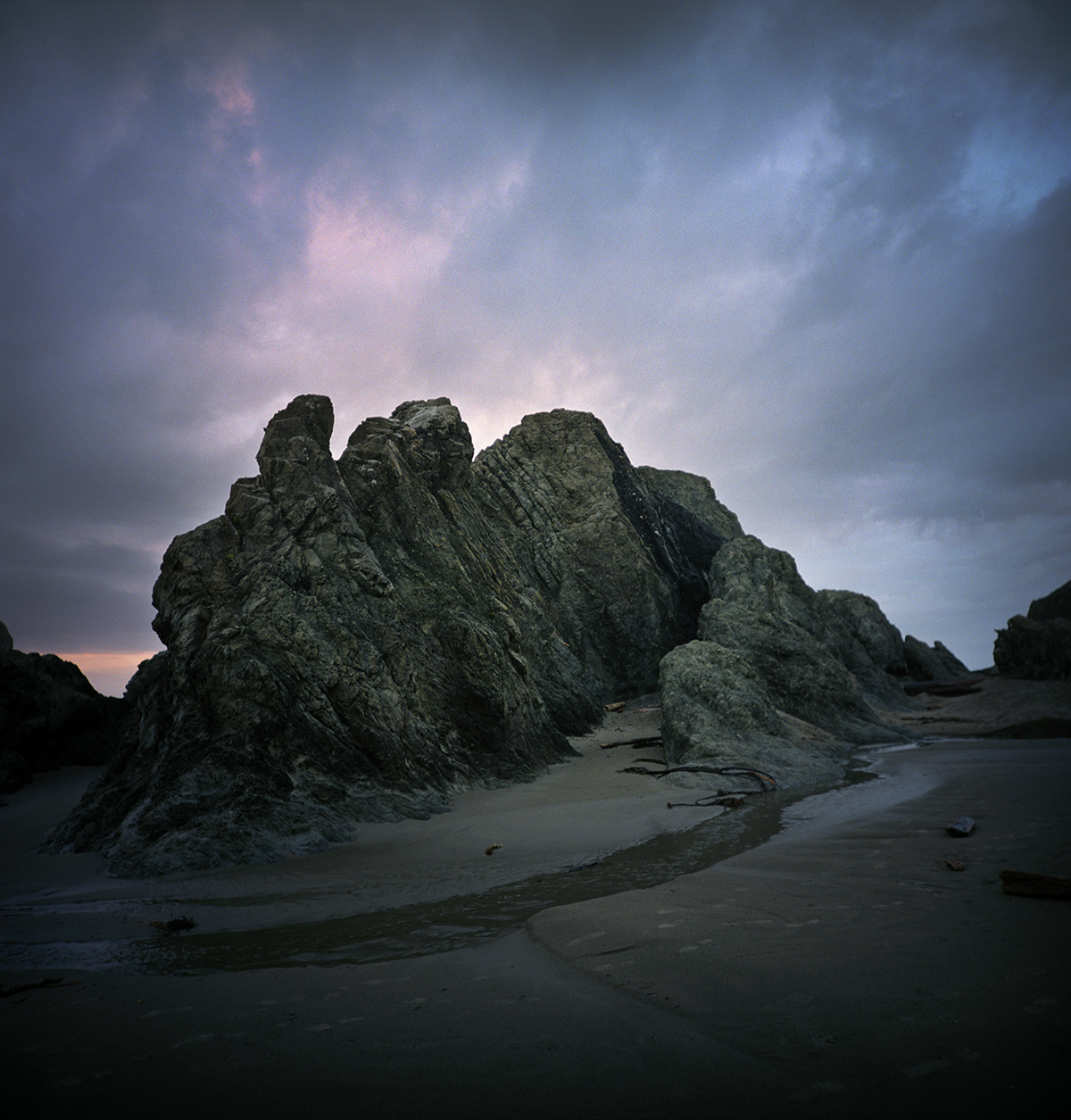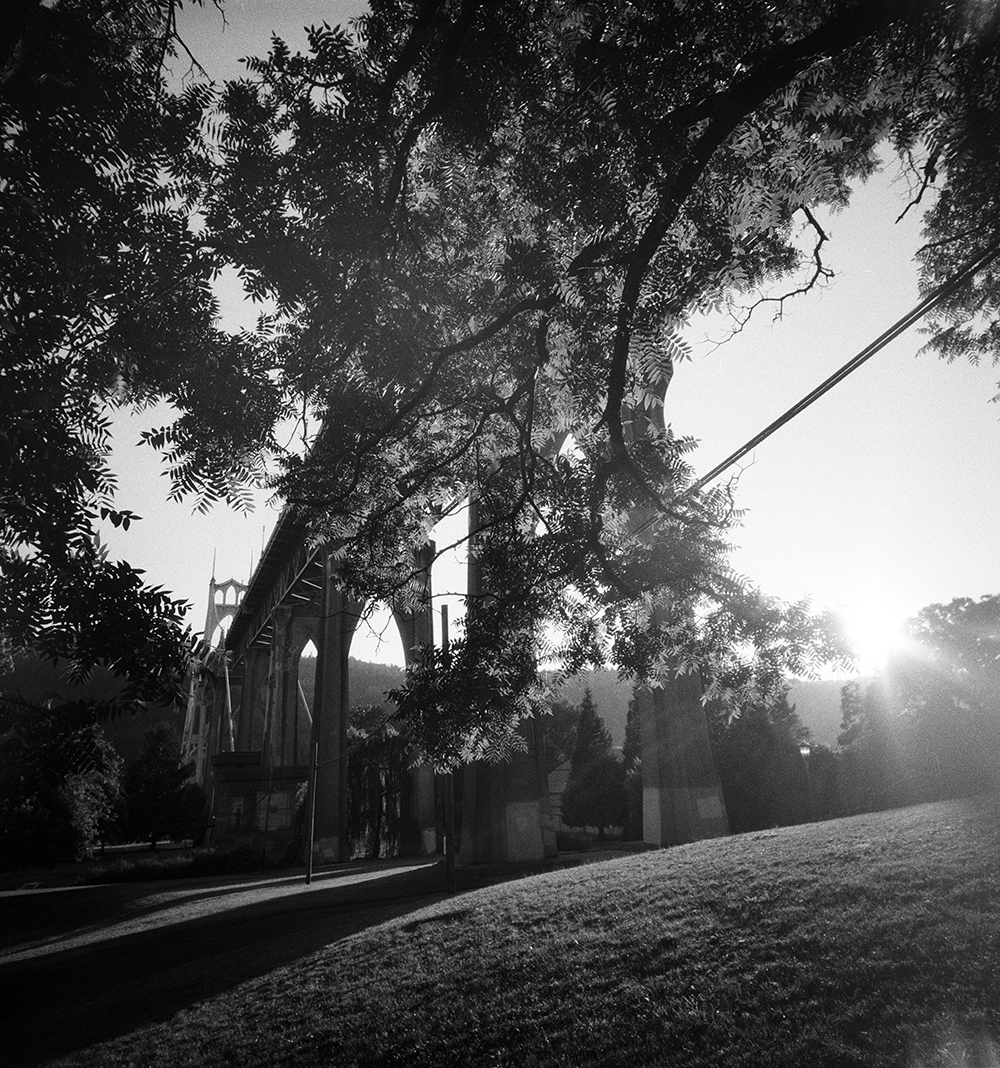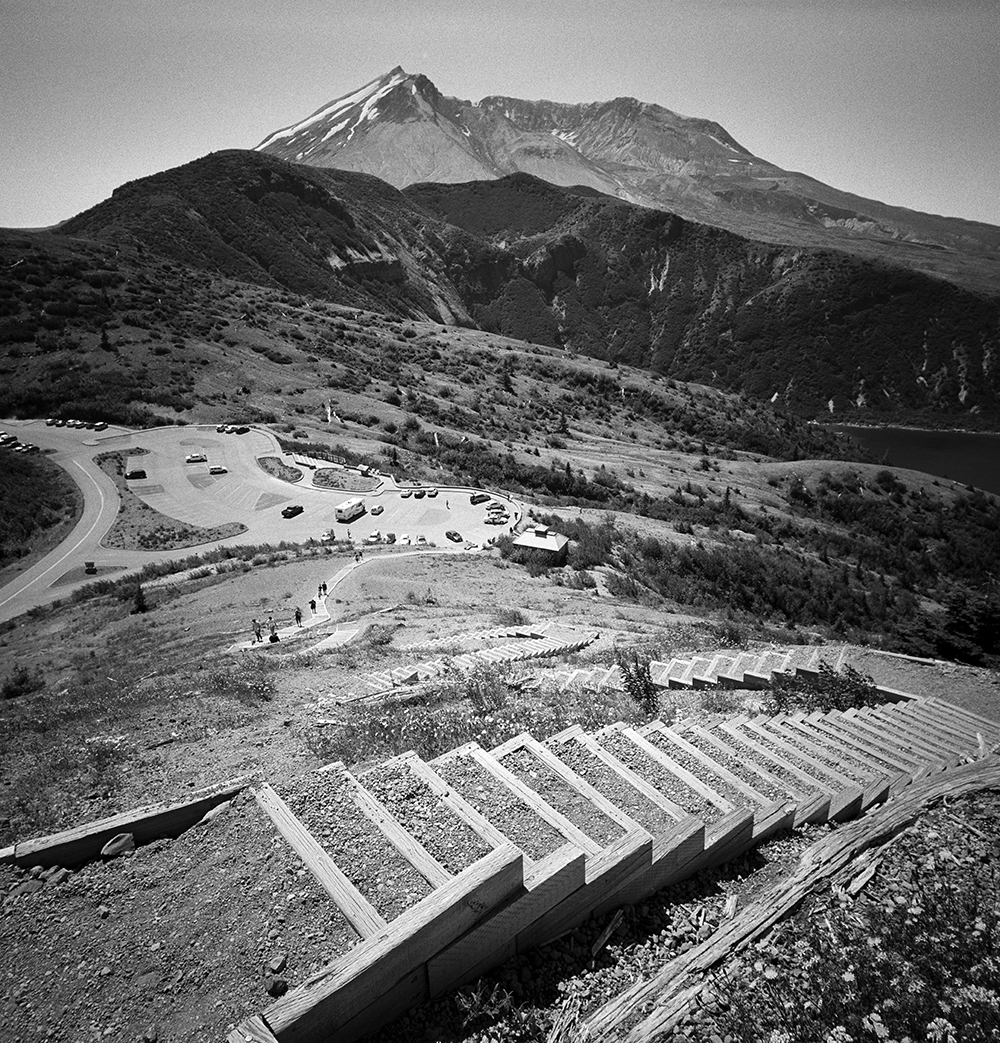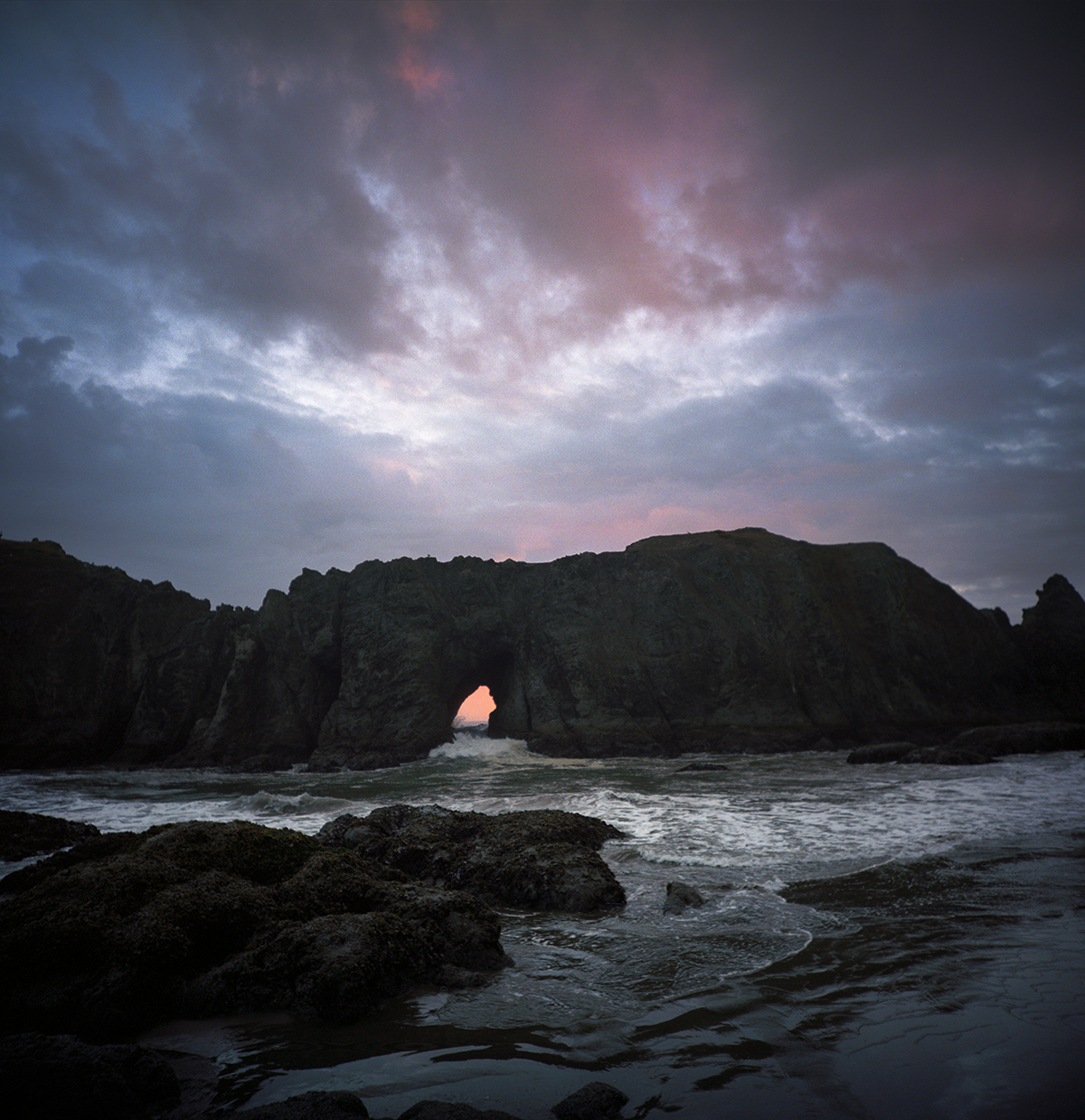As film photographers working in this modern world we have come to accept, or to at least expect, certain truths. Ours is a niche market. It is one that has shrunk, condensed, and is one that will likely to continue to coalesce down rather than expand out. We see films disappear as opposed to appear. Cameras are discontinued rather than introduced. Largely though we are OK with this, we love our old film cameras, we enjoy appreciating what has already been built, we don't clamour for new cameras. But new cameras come along from time to time and it is exciting when new elements are introduced to the film market. Film photographers enjoy having new toys to play with as much as the digital photographer does, but mostly we enjoy the sense of optimism that comes from seeing the world of film photography grow rather than shrink.
When Lomography introduced the Lomo LC-A 120 it was with this optimism that we got excited about getting one in to Blue Moon Camera. A point-and-shoot medium format street camera with a 38mm lens! That is the same incredibly wide focal length as the Hasselblad Super Wide! How crazy. How much fun! So we ordered one to try out and test sell. The following is a combination of what info we gleaned researching the camera on-line and what we have learned through hands-on experience.
The Technical Specs
The Lomo LC-A 120 is a medium format, fixed lens camera. It takes 6x6cm exposures using a 38mm f4.5 Minigon XL glass lens. Exposure is controlled wholly by the camera's built-in light meter with shutter speeds maxing out at 1/500 and in theory timing out as long as necessary on the long end. We have yet to test this camera in extreme low light though, so the long exposure capabilities are still unverified. The aperture is also automatically variable from f4.5 to f16. The camera has no exposure compensation adjustment meaning that the only control a user has over exposure is via the ISO dial which ranges from ISO 100-1600. Focusing is done via zone system with the camera having four different zones to choose from: .6m (2 feet), 1m (3.3 feet), 2.5m (8.2 feet) and infinity. Film advance is done via a winding knob atop the camera and automatically stops at each frame. The camera has a multiple exposure switch that allows as many exposures on a single frame as you want. A vertically sliding cover protects the lens and turns the camera off. The LC-A 120 also has a standard tripod socket and cable release thread. The camera is completely battery dependent and runs off of three 1.5V SR44/LR44/Varta V76PX batteries – the same battery that goes in your Pentax K1000, Nikon FM or Olympus OM-2.
The Good News
The camera is fun and easy to use. Having no exposure control, the built-in light meter does everything for you and does a good job of it. All our exposures came out pretty much right on. We used the camera in mild low light, in bright light, pointing directly at the sun, indoors and outdoors. The meter handled every situation very well. We are not sure of the metering pattern – most likely a center-weighted scheme – but whatever the configuration it is accurate and versatile.
The quality of the images also looks really good. We were not sure what expectations to have going into this. The Lomo brand is more often associated with quirky crappiness than it is quality. We were intrigued by the 38mm lens on this camera though and had cautious optimism for what it could do. It is the same focal length as the Hasselblad SuperWide cameras so we figured it had to be interesting. We started by looking at Lomography's sample images and as expected their images are very Lomo-like, emphasizing the cross-processed or expired film look with heavy vignetting and shifted colors. But we also found some blogs outside Lomography that showcased surprisingly sharp and crisp images from this camera. After putting several rolls through the camera we are happy to say that it met and exceeded our cautious optimism... easily. Is this camera as sharp as the Hasselblad Super Wide we mentioned earlier? We don't know, we haven't done side by side comparisons but only because we feel it is safe to assume that it most certainly is not anywhere in the same league as that legendary lens. But is it sharp and crisp? Oh yes. The images look great. You can use it with funky film and get funky effects, but you can also use it in a more serious fashion and get more technically serious results. There is some falloff at the corners but this did not feel very severe to us especially given the focal length of the lens. We did not check for any chromatic aberration just because that felt a bit like splitting unnecessary hairs with this camera.
Focusing is also straight forward. The camera uses zone focusing, so you adjust focus via a switch to the side of the lens based off four different zones which equate to close, slightly less close, middle and far. Not super precise but also a much simpler and hence more reliable mechanism than a rangefinder. The camera is also light and compact, very nicely so in both of these categories in fact. Slip it in and out of your pocket, pop open the lens, check your focus zone, point and snap away.
This camera is designed and marketed toward candid street snaps and it will excel at those, but it also can be used for a variety of other genres such as landscapes, architectural work, or even portraiture.
The Bad News
Honestly there is not too much to say but some of what there is to say is potentially a big deal. The simplicity of the camera's design could be a double-edged sword. As mentioned there is no rangefinder focusing, no manual exposure controls. No bulb mode. If you are after these things, look elsewhere. The camera is very plastic-y and light-weight. The strength of its build does not inspire confidence. Just how much rough and tumble use will it hold up against? We have no idea but the safe bet would be not a lot. The simple design though is a plus here. The less complex a camera is, the less there is to fail. It would be nice if the film advance was manual via a red window in the back as that would be one less thing to worry about and in truth we have had film advance issues with this camera. We have seen over a dozen rolls of film through our first LC-A 120 and only one roll had 12 exposures, every other roll suffered wide spacing that caused the last 1-3 frames to fall off the end. There seems to be some tips and tricks to help alleviate this such as applying tension when the roll is initially loaded to lining the start mark up prior to the indication in the negative mask. But inconsistent frame spacing is bad frame spacing and this camera seems to suffer it frequently.
The biggest piece of bad news we had though was shutter issues. Our first roll went great, with most of the exposures showing up but the next three rolls ended up being only about half exposed with the shutter clicking but not actually exposing a frame. We literally only got half the possible exposures on each of those last three rolls. This sadly is pretty unfortunate for a camera that is $400 brand new. One would hope to get more than six exposures a roll. We wrote back to Lomography about this and they have been very helpful in sending us out a replacement camera. The replacement camera did not seem to have this issue thankfully. We also rejiggered around the batteries in the bottom of the camera and that helped fix the issue... until those batteries died and we had to replace them and the shutter issue came back. Loose contacts? Quirky wiring? Who knows, but it is annoying and frustrating. Speaking of batteries, beware of that sliding cover. We carried this camera around in a backpack for a few days and the cover has a tendency to slide down unlocking the shutter. While it takes a fair degree of pressure to actually fire the shutter it only takes a slight amount of pressure on the shutter button to trigger a red light inside the viewfinder (we wish this light didn't exist at all in this camera). So the camera sat in a backpack for hours with a red LED light triggered and drained the batteries in the camera rapidly.
In summary despite the missing frames, we loved using this camera and if it can prove itself to reliably expose 12 frames per roll and be somewhat consistent in its spacing of negatives then our excitement will grow even more. The quality of the images and the look of the 38mm lens are wonderful and this will be a great camera to carry around city streets. Over all, we are thankful that we even get to talk about a new medium format camera. We already sold the replacement camera Lomography shipped to us, so we are left at the moment with only the problematic original camera to work with. We plan on ordering a couple more for inventory and time will tell us more in regards to how far this camera's mechanics and electronics can be trusted. But if you don't ask for too much, this is a camera that will over-deliver.
Connect
Zeb Andrews is a photographer and manager of the greatest camera store in the world, Blue Moon Camera and Machine. Connect with him on Facebook and on Flickr.






